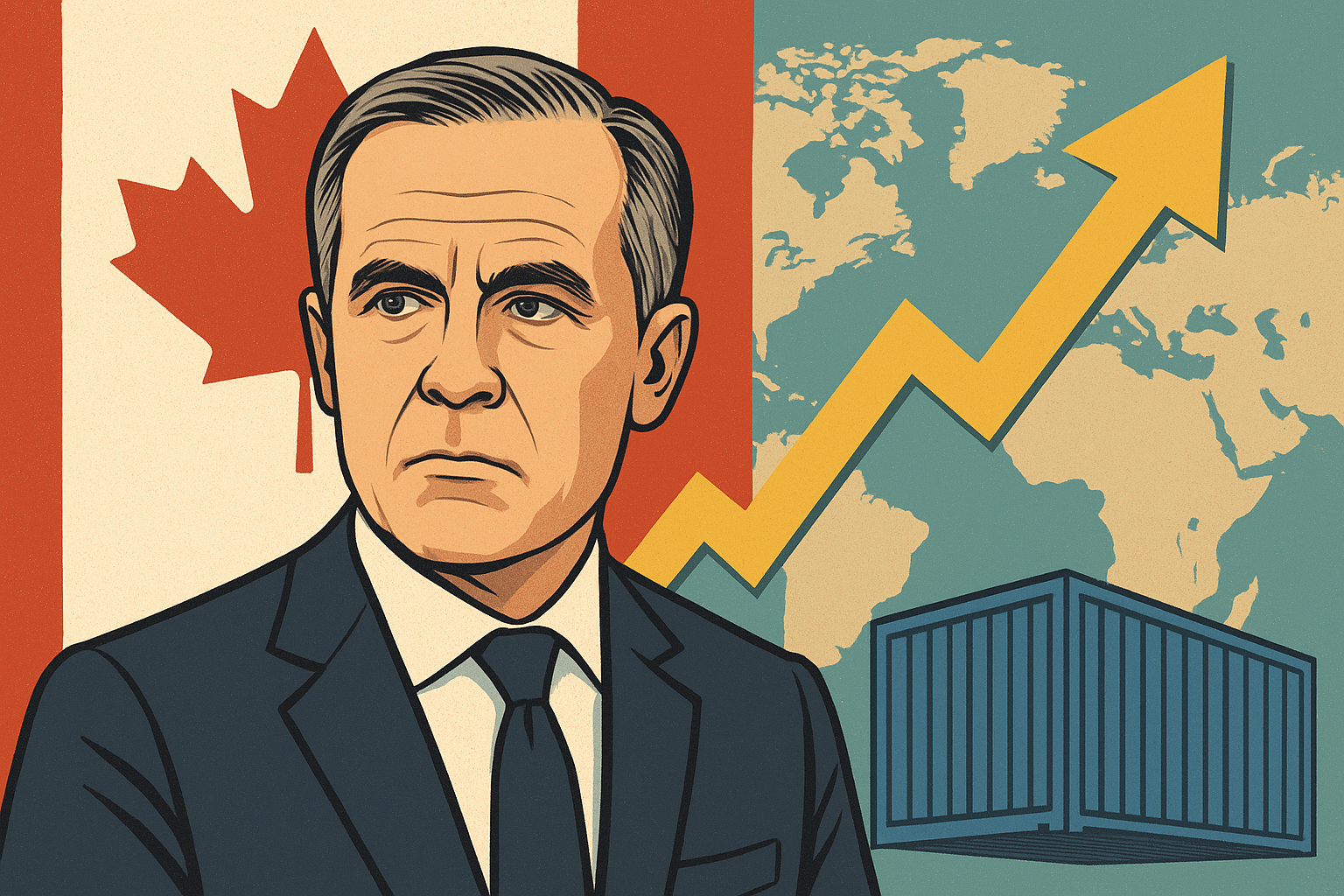Canada’s Strategic Pivot: What Investors Need to Know
In a landmark announcement that is sending ripples through North American markets, Canadian Prime Minister Mark Carney unveiled a bold economic vision aimed at reducing the nation’s heavy reliance on the United States. With U.S. tariffs on autos, steel, and lumber pressuring Canadian exporters, Carney signaled a transformative plan to double non-U.S. exports over the next decade, marking a strategic pivot for the country’s trade and economic policy (AP News, WTOP News).
Why This Matters for Investors
For investors, the implications of this pivot are profound. Canada has historically maintained a deeply intertwined economic relationship with the U.S., with roughly 75% of its exports directed south of the border. Carney’s strategy to diversify markets represents both an opportunity and a set of risks. Should Canada successfully expand its trade relationships globally, sectors such as technology, natural resources, and advanced manufacturing could experience substantial growth. However, the transition may also introduce short-term volatility in industries heavily dependent on U.S. demand, particularly the automotive and materials sectors.
Market Reactions and Investor Sentiment
Immediately following Carney’s address, Canadian equities saw mixed reactions. The S&P/TSX composite index experienced modest declines in auto and materials stocks, reflecting investor caution over potential disruptions. Analysts at RBC Capital Markets note that while the long-term strategy is promising, the initial adjustment period may weigh on quarterly earnings for companies reliant on U.S. supply chains (RBC Capital Markets, Oct 2025).
Moreover, currency markets are reacting to the news. The Canadian dollar showed slight volatility against the U.S. dollar, reflecting investor anticipation of changes in cross-border trade flows. Foreign exchange strategists emphasize that a successful diversification of exports could strengthen the CAD over the medium term, while failure to secure alternative markets may exacerbate currency risk.
Future Trends to Watch
- Global Trade Partnerships: Investors should monitor Canada’s efforts to negotiate new trade agreements in Asia, Europe, and Latin America. Successful partnerships could unlock new revenue streams for Canadian exporters.
- Sectoral Shifts: Technology, clean energy, and agribusiness may benefit disproportionately from this diversification. Companies with adaptable supply chains and global client bases are poised to capture early upside.
- Policy and Fiscal Implications: The government’s push for export expansion may require significant investment in infrastructure and incentives, potentially impacting fiscal deficits. Investors should track budget announcements and policy updates to assess implications for domestic financial markets.
- U.S.-Canada Trade Dynamics: While reducing dependency on the U.S. can mitigate tariff exposure, it also introduces geopolitical risks. Any friction or delays in market diversification could create short-term volatility in cross-border investments.
Actionable Investment Insight
Investors should consider recalibrating portfolios with a focus on Canadian firms positioned for global expansion. Export-oriented technology companies, resource producers targeting new markets, and diversified manufacturing firms could offer long-term growth potential. Conversely, sectors tied primarily to U.S. demand may face temporary headwinds, warranting closer monitoring and potential hedging strategies.
Diversifying exposure across Canadian and non-U.S. assets may help mitigate geopolitical and trade risk while positioning portfolios to capitalize on Canada’s strategic pivot. Monitoring updates from credible sources such as AP News, WTOP, RBC Capital Markets, and government releases is critical for timely investment decisions.
Canada’s bold step to reduce U.S. dependency underscores the importance of agility in global investing. By tracking these developments, investors can anticipate shifts in market dynamics and strategically position themselves for both risks and opportunities in the evolving Canadian trade landscape.
Stay informed with MoneyNews.Today for up-to-the-minute insights and expert analysis that empower investors to navigate complex global markets.





